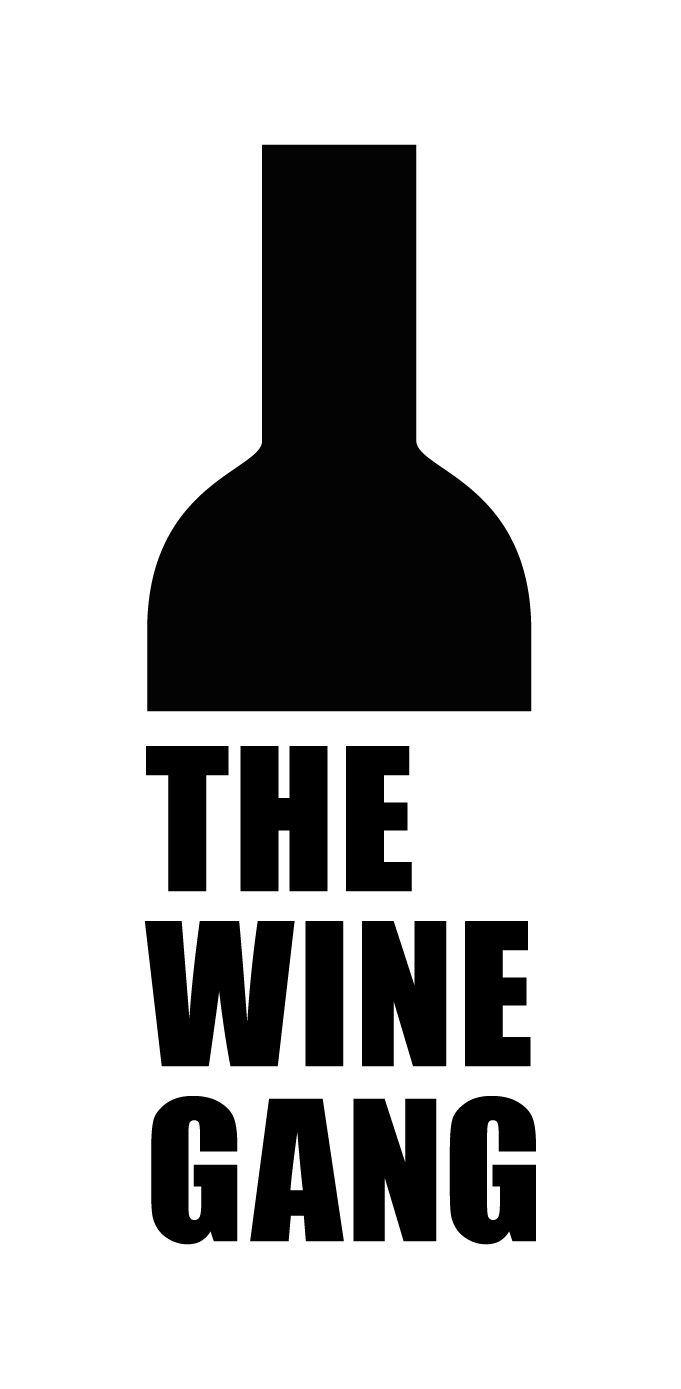Brewing Excellency - Our Sake Zone's line-up
For the very first time at a Wine Gang Festival we will have a dedicated Sake zone that brings together an incredible group of breweries alongside a Japanese craft artist.
We are very privileged to have some of the best sake producers pouring their exquisite brews and do hope this might allow our guests to learn more about a truly remarkable drink that, like wine, has such an amazing history and complexity.
Below you will find brief profiles on the breweries attending our event next Saturday.
Come along, meet the faces behind the (beautiful) bottles and taste a unique range of sakes!!
[Specialist sake importer Tengu Sake and premium Spanish food purveyor Brindisa will also be running a Sake Food Pairing Masterclass. It will be a truly unique experience, not to be missed.
Book your place now to avoid disappointment!]
Dassai
asahishuzo.ne.jp | Twitt: @DassaiSake | Inst: @dassaisake
It's probably fair to say that Asahi Shuzo’s Dassai brand is as well-known internationally among sake enthusiasts as the name Penfolds among wine lovers. Sitting over a river in in the hills of Iwakuni in Japan’s far south west, Dassai is housed in a large modern building, making it literally and symbolically one of Japan’s most visible breweries, with a ‘cool’ international profile. Originally established during Japan’s Edo Period (1603 – 1868), it was taken over by the Sakurai family and established as Asahi Shuzo when several breweries merged in 1948, coming up with the innovative Dassai brand in 1990. Unlike most breweries, Dassai brews all year round, streamlining the process with the simplicity of focusing on ultra-premium junmai daiginjō sake made with Yamada-nishiki rice and its polishing rates of 50%, progressively reducing to 39% and 23% are directly reflected in its slickly visible branding: Dassai 50, Dassai 39 and Dassai 23. We are lucky enough to be showing the super-seductive Dassai 23.
Daishichi
english.daishichi.com
Convinced that the traditional kimoto brewing method is the way forward, Daishichi’s enthusiastic 10th generation owner, Hideharu Ohta, has harnessed modern technology with a superflat rice polishing technique pioneered as a way of improving the quality of the rice and by extension bringing out the richness and umami of the kimoto method. This involves mashing the rice in giant buckets with broomstick-like poles to create the lactic acid needed to encourage strong positive yeasts and prevent wild yeasts from spoiling the party. Located in the furniture-making town of Nihonmatsu Daishichi uses only Yamada-nishiki and Gohyakuman-goku rice in its sake production and 85% of its sake is premium grade, produced using the medium hard, mineral-rich, subterranean water from a well 10 metres beneath the brewery, filtered by the granite layer at the foot of Mt Adatara. Most of its sakes are aged for a long time in the many ageing rooms at the brewery.
Hakkaisan
hakkaisan.com | Twitt: @HakkaisanSake
Making a wide variety of different sakes in the classic, clean and crisp Niigata tanrei karakuchi style, Hakkaisan is a medium-sized sake brewery located in Minami-Uonoma at the foot of Mount Hakkai on the Sea of Japan coast. Thanks to abundant winter snows, it has its own yuki muro (snow storehouse). Hakkaisan uses spring water from the holy site of Raiden-sama, the god of thunder. This pristine, soft water is pumped underground, transported to the kura from the foot of Mt. Hakkai and is used in all aspects of sake production with quality sake rice such as Gohyakuman-goku and Yamada-nishiki from its growers. The intensely aromatic Snow Aged Junmai Ginjō, with vanilla and fresh pear notes, is aged in its insulated yuki-muro, containing over 1000 tons of snow, for three years at 3-5°C with Yamada-nishiki, Gohyakuman-goku and Yukinosei rice polished to 50%; sweet to the taste and yet with the help of its umami content, it finishes dry. In Tokyo, its Sennenkoujiya shops sell not only the regular sake, but seasonal, premium products and sake-related products.
Hideyoshi
hideyoshi.co.jp/en | samsake.com
Featured in Joanna Lumley’s three-part travel documentary on Japan, Hideyoshi in north-west Japan’s Akita Prefecture is owned by the affable Naoki Suzuki, the 19th generation of a family whose line dates back to 1689. The construction of the current Suzuki Shuzoten brewery was completed in 1868 and today’s brewing is still conducted in this historic building, using the astonishing natural blue soft groundwater from the nearby Ōu Mountain range. A speciality is the limited production Flying Pegasus Daiginjō Koshu. The semi-dry Hideyoshi Amakarapin Junmai is an approachable, off-dry style and Lachamte is an innovative, sparkling sake made from local Akita Sake-komachi rice polished to 65%.
Keigetsu by Tosa Brewing Co.
keigetsu.co.jp | Twitter: @KeigetsuU | Inst: @keigetsu_uk
Based in a province of scenic, natural beauty on the island of Shikoku, Keigetsu in party and fun-loving Kochi is a lyrical Japanese term meaning the beautiful evening scene created when the moon hangs over the Katsurahama shore. Thanks to a combination of abundant soft water and clean fresh air from the mountains in the Tosa-Reihoku region of northern Kochi Prefecture, the Tosa brewery has been producing high quality sake under the Keigetsu brand since its establishment in 1877 by Fukutaro Matsumoto. Tosa’s small, labour-intensive operation of local staff uses locally grown Hi-no-Hikari and Gin-no-Yume rice grown a couple of kilometres from the brewery. The Keigetsu Tokubetsu Junmai, Honour of Aikawa, is elegantly melon-like and finely textured with a background umami savouriness, while Keigetsu Junmai Daiginjō Dream Brew, polished to 45%, and made from Gin-no-Yume rice, is delicate, pure and teasingly dry. Along with the sweet and citrusy 8% Keigetsu Yuzu Sake, made from local organic yuzu fruit, Keigetsu’s John Sparkling Sake, is a fun, yet serious, sparkling sake.
Tatenokawa
tatenokawa.jp/en/sake/ | Twitt: @tatenokawa
In 2017, Tatenokawa, pushed the envelope of rice polishing by producing 150 bottles of a junmai daiginjō sake, Komyo (meaning Zenith) with a previously unheard of polishing rate of one per cent. It went on sale for ¥100,000 (circa £760). On the back of the publicity, Ollie Hilton Johnson of tengusake.com, Tatenokawa’s UK importer, procured a few bottles, hosting a lavish £200-a-pop dinner at Roka Mayfair in early 2018, showcasing the 1% Special One. Located in Sakata north of the Mogami River, which flows into the Sea of Japan in the country’s north-west, Tatenokawa is owned by Jumpei Sato, who took charge in 2001, and soon started working with struggling local farmers in the Shonai area. With soft water from Mt. Chokai, Gassan and Yudono, and local rice varieties, which account for 80% of production, Tatenokawa makes a premium range of junmai daiginjō sake exclusively. Tatenokawa is showing its 50 Seiryu "Stream" JD and 33 "Three Peaks" JD.
Tosatsuru
tosatsuru.co.jp
Overlooking the Philippine Sea in eastern Kochi near Cape Muroto against a verdant backdrop of cedar-clad mountains, Tosatsuru traces its history back to 1773 when it was founded by the Hiromatsu family. Today it is run by 11th generation Yoshihisa Hiromatsu and we are thrilled to have his sister Yukiko representing the brewery in our Sake Zone. As well as its clean, abundant soft water from the clear Yasuda river, Tosatsuru also uses filtered, desalinated deep sea water for products such as its elegantly dry and finely balanced ‘azure’ Ginjō made from fine Yamada-nishiki rice from Hyogo and and the soft, lowish alcohol (14.5%) Deep Sea Water Junmai. The distinctive, azure-hued bottle and package of the wonderfully pure ‘azure’ Ginjō was designed by Yukiko’s husband, Alasdair Duncan, back in 2003 to reflect the cleanness and subtlety of the sake, and to allow the sake to be instantly recognisable.
Tsuji Honten
gozenshu.co.jp
Sandwiched between Hyogo and Hiroshima, Mimasaka province is home to Tsuji Honten Co.,Ltd, and its Gozenshu brand (meaning sake dedicated to the lord). Here the brother-and-sister team of Soichiro and Maiko Tsuji are the seventh generation of a family that first established the brewery in the charming historic town of Katsuyama in 1804. Today Tsuji Honten is best known for its pioneering use of Omachi rice, an old strain, and the ancient bodaimoto brewing technique, which, together with its soft water from the Asahi River, produce a distinctive sake that’s creamily rich, malty and earthily rustic with zesty, fruity notes. Tsuji Honten will be showing its umami-laden Gozenshu "Rocky Mountain" Junmai Bodaimoto and Gozenshu "Mountain Stream" Junmai Bodaimoto Namazake .
Yamatogawa
yauemon.co.jp | Inst: @yauemon1790
Located in Kitakata in an area famous for its rice production in Japan’s north eastern Prefecture of Fukushima, Yamatogawa was established in 1790, since when it has continued to brew sake for nine generations. Owned by Yauemon Sato, who became president in 2006, Yamatogawa maintains the traditional, evolving processes of sake brewing inherited from his ancestors, using organic sake rice grown with pesticide-reduced fertilisers in its 45 acres of rice fields as well as from contract farms. 2014 saw Yauemon Sato become Chairman and Kazunori Sato the President. With its humid, hot summers and cold winters, Yamatogawa carries out stainless steel, low temperature fermentation using underground soft water naturally filtered from the 2105 metre Iide Mountain. It is showing its Yauemon "Silent Forest" JG and Yauemon "Autumn Leaves" Honjozo.
— posted by Anthony Rose










